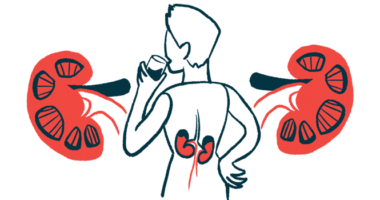Kidney failure in AAV patients raises risk of infection and death: Review
Lower AAV relapse rate found in patients undergoing kidney dialysis

ANCA-associated vasculitis (AAV) patients undergoing dialysis for kidney failure have a lower risk of relapse, but a higher risk of infection and death, according to a review study.
These findings help piece together evidence “to provide guidance for managing these patients and to guide future research opportunities,” researchers wrote.
The study, “Outcomes in ANCA-associated vasculitis patients with end-stage kidney disease on renal replacement therapy—A meta-analysis,” was published in Seminars in Arthritis and Rheumatism.
AAV can damage small blood vessels in kidneys, impairing their function
AAV happens when the immune system attacks the body’s own small blood vessels, causing inflammation and damage. Its symptoms depend on what organ is most affected.
When AAV hits the kidneys, it can damage the small blood vessels responsible for removing extra water and waste from the body. Over time, the kidneys may fail to work as they should, and patients experience kidney failure, prompting the need for treatment that replaces kidney function.
Kidney replacement therapies include dialysis, which is a process that filters the blood when the kidneys are not able to do it, or a kidney transplant.
Given that previous data suggested that AAV patients with kidney failure have a lower relapse rate, but are at a high risk of infections, maintenance immunosuppressive treatment are not recommended for this subset of patients.
To help provide some guidance on the best treatment strategies, a team of researchers in Canada looked at the outcomes of AAV patients with kidney failure who needed to use one of two types of dialysis — hemodialysis or peritoneal dialysis.
During hemodialysis, the blood goes through a filter called a dialyzer that removes extra water and waste outside the body. During peritoneal dialysis, this is done using the lining of the abdomen as a filter.
The main findings were that AAV patients with [kidney failure] had high mortality and infection rates, but lower relapse rates than what is reported for AAV patients without [kidney failure].
The researchers systematically reviewed studies published up to December 2021 that reported mortality, infection, and relapse outcomes for this subset of patients.
A total of 22 studies from 10 different countries from 1971-2020 were included in the meta-analysis. They included a total of 952 people with AAV, mean age of 58.6 years, who were followed for an average of 4.3 years, or more than 3,600 person-years.
Person-years is a unit of measurement that helps to measure the amount of time that people have been observed. It is calculated by taking the number of people being studied and multiplying it by the number of years they were followed.
Pooled results showed that the mortality rate among these patients was high, at nearly 11 deaths per 100 person-years. This meant that out of 100 AAV patients with kidney failure, nearly 11 would die each year.
In addition, 80.9% of patients were alive one year after they were diagnosed with kidney failure, and 61% were alive after five years.
“Mortality varied significantly by country with the highest cumulative rates from studies in China,” the researchers wrote, adding that the reasons behind these geographic variations “have not been previously explored and require further study.”
Data from 15 studies with available data on the cause of death for 319 patients indicated that infection was the most common cause of death (33.2%), followed by cardiovascular disease (21.9%). Death due to AAV occurred in 10.3% of cases.
The pooled rate of severe infection, or an infection that needed into-the-vein antibiotics and/or hospitalization, was 66.57 per 100 person-years. By removing one study that reported a very high severe infection rate (192 per 100 person-years), the pooled rate dropped down to 42.1 infections per 100 person-years.
Use of cyclophosphamide may increase risk of poor outcomes
Variations in mortality and severe infections were also found to be associated with the use of cyclophosphamide, an immunosuppressant, suggesting that this therapy may increase the risk of poor outcomes, the team noted.
Also, there were about six relapse events per 100 person-years, meaning that six out of 100 patients experienced a relapse per year.
Four studies reported on relapse rates before and after patients were diagnosed with kidney failure, and three could be combined in the analysis. Results showed that relapse rates dropped by about four times after initiation of kidney replacement therapy (32.99 vs. 8.66 relapses per 100 person-years).
“Most relapses were severe, requiring re-induction therapy,” the team wrote, adding that “death after relapses varied widely across studies (0–60%),” and was lower in the two studies with higher use of maintenance immunosuppressive treatment (0% and 23%).
“The main findings were that AAV patients with [kidney failure] had high mortality and infection rates, but lower relapse rates than what is reported for AAV patients without [kidney failure],” the researchers wrote.
While “cyclophosphamide may increase risk of mortality in this population,” they added, more studies are needed to understand the role of immunosuppression after kidney failure in AAV patients.








